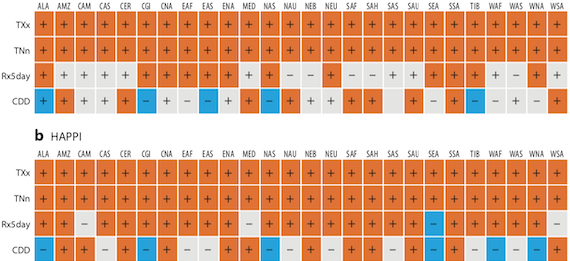ABSTRACT
Differentiating the impacts of climate change between 1.5°C and 2°C requires a regional and sector-specific perspective. Whereas for some regions and sectors the difference in climate variables might be indistinguishable from natural variability, other areas especially in the tropics and subtropics will experience significant shifts. In addition to region-specific changes in climatic conditions, vulnerability and exposure also differ substantially across the world. Even small differences in climate hazards can translate into sizeable impact differences for particularly vulnerable regions or sectors. Here, we review scientific evidence of regional differences in climate hazards at 1.5°C and 2°C and provide an assessment of selected hotspots of climate change, including small islands as well as rural, urban, and coastal areas in sub-Saharan Africa and South Asia, that are particularly affected by the additional 0.5°C global mean temperature increase. We interlink these with a review of the vulnerability and exposure literature related to these hotspots to provide an integrated perspective on the differences in climate impacts between 1.5°C and 2°C.

Schleussner C.F., Deryng D., D’haen S., Hare W., Lissner T., Ly M., Nauels A., Noblet M., Pfleiderer P., Pringle P., Rokitzki M., Saeed F., Schaeffer M., Serdeczny O., Thomas A. (2018) 1.5°C Hotspots: Climate Hazards, Vulnerabilities, and Impacts. Annual Review of Environment and Resources, 43 (1), 135-163, https://doi.org/10.1146/annurev- environ- 102017- 025835
